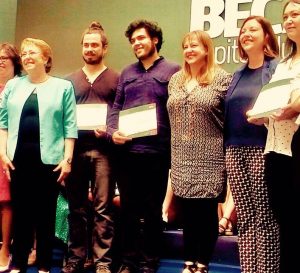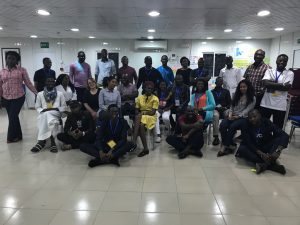Design Age Institute Pathfinder Pop Up

Team portrait! Attended pop up of pathfinder projects at Design Age Institute, RCA, Fiona helped run the Innovate UK transport and mobility competition for this and worked on Centaur project, mobility device fit for 21st Century. Photography credit, Adam Hollingsworth
‘Out of Office’, guidance on working from home as we age

At the Design Age Institute (DAI) I commissioned the Out of Office report to look at how homes offices can be designed to meet people’s work needs as they age. This is more sustainable as we age for design for planet. The report was researched and written by Dr Katherine Baker, Associate Lecturer in Physiotherapy Northumbria University and Dr Emilene Zitkus, Senior Lecturer in Inclusive Design, Loughborough University. Melanie Andrews, Design Manager at DAI managed the project.
This work built on the Home Office to Age in Place project I led at DAI with Northumbria University and was exhibited at the Design Museum.
Coaching Design Thinking Course
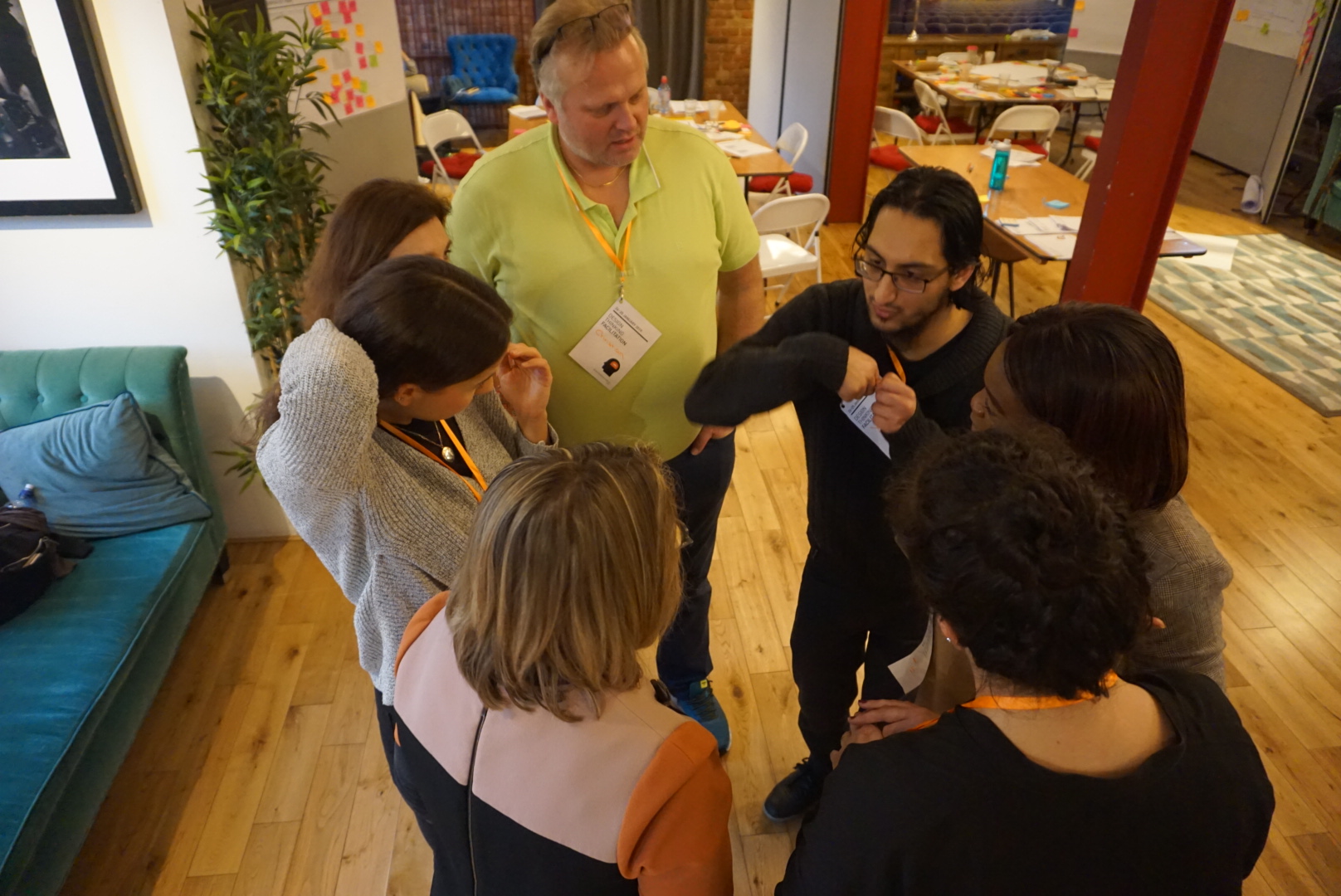
Spent past two days as a coach with Design Thinkers Academy, facilitating lovely, diverse bunch of people who all want to learn design thinking and apply it in their organisations.
In Vietnam facilitating Creative Hubs: Learn Programme
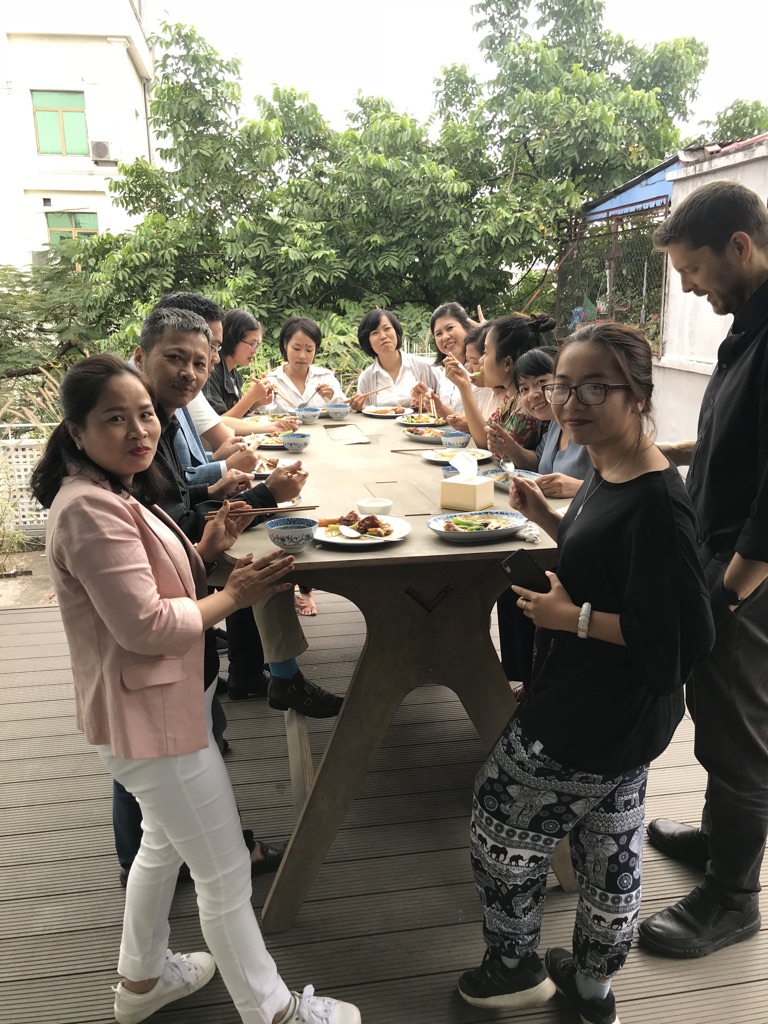
In Vietnam this week, working with creative hubs from across the country as part of the Creative and Cultural Hubs Vietnam Programme with #British Council and #Nesta. Delivering with Nesta’s Head of Innovation Development Glen Mehn. Very diverse set of creative hubs who are working with film-makers, artists, cultural events and traditional crafts. Wider programme this week has included presentations with hubs from Europe and a national symposium with representatives from the Ministry of Culture, Sports and Tourism. Great to see so much collaboration to encourage and develop the creative economy here.
In Ghana, training local Nesta Associates
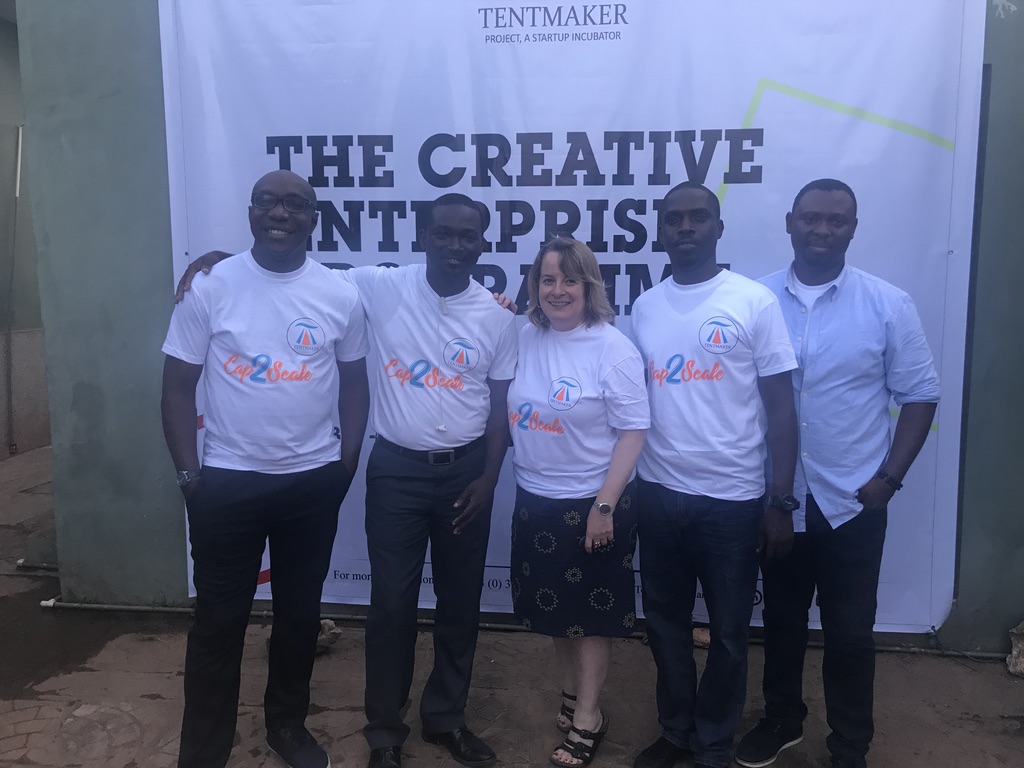
In Ghana this week with Nesta and the #British Council training local #Nesta Associates to run the Creative Enterprise Programme with fashion focused enterprises at Tentmaker Ghana. The local associates will continue to scale the CEP Programme in West Africa in Nigeria and Sierra Leone. Thanks to everyone involved for a great, productive time.
One Year with Creative Entrepreneurs in Four Continents
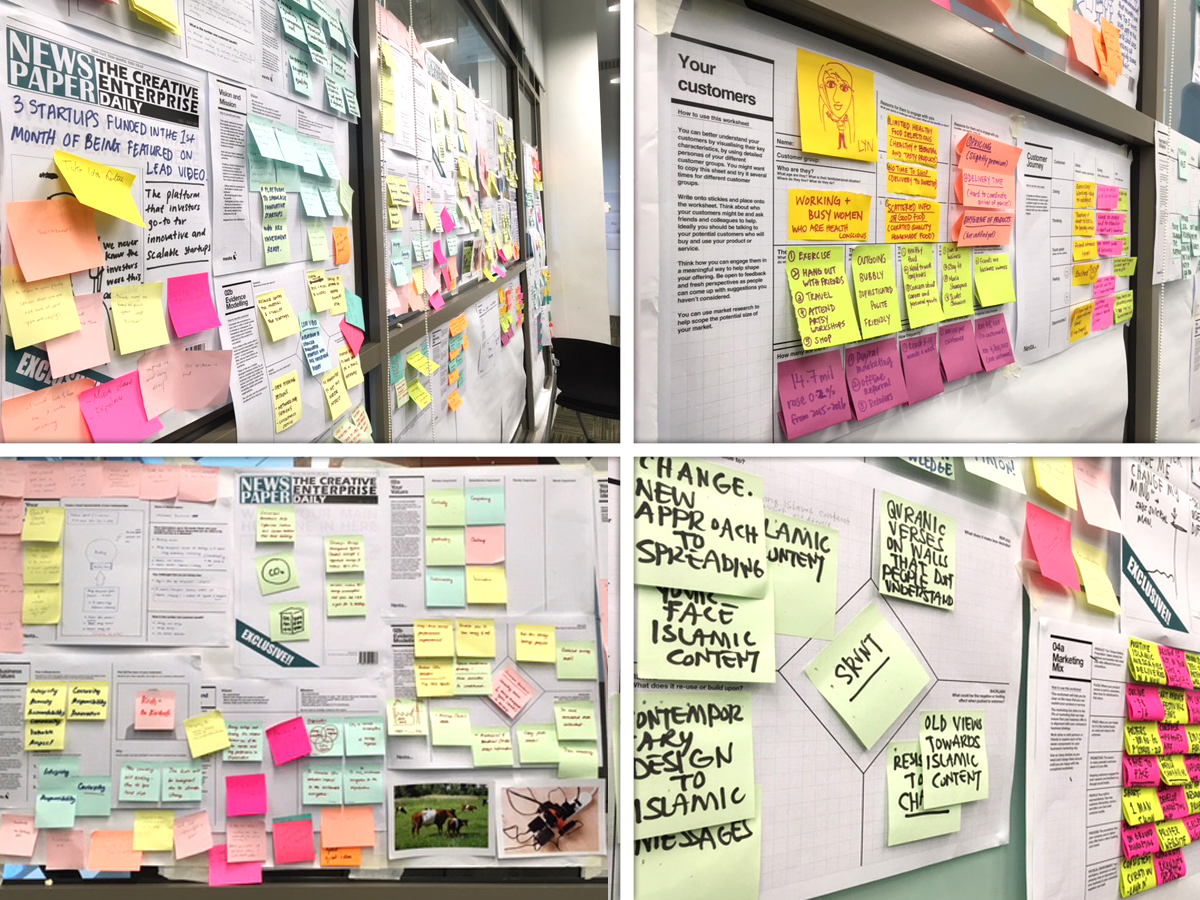
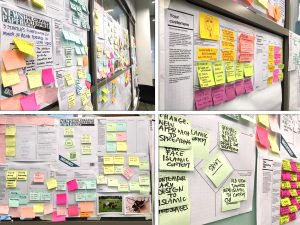 Creative Enterprise Workshops: Chile, Colombia, Malaysia, Nigeria and Ukraine “This is extreme work-shopping”, joked Sonja Dahl, Nesta’s, Head of Learning Programmes as the temperature climbed over 40 degrees in Santiago, Chile. I was there facilitating the Creative Enterprise Programme (CEP) with Nesta and the British Council. The programme consists of practical workshops to support creative entrepreneurs to set up and grow their businesses. Last year I facilitated the programme in Chile, Colombia, Malaysia and Ukraine, and culminating in scaling the programme in West Africa with 25 creative hubs and 3 locally recruited associates of the programme. What have I learnt from this experience about building the creative economy? What kinds of creative enterprises are emerging in the different countries? Below are some of my thoughts from a year with creative enterprises across the world. Building the creative economy The challenges that countries face vary hugely and can include balancing their economic growth, skilling and employing young people, and providing more equal opportunities for women. For example, Chile’s economy is heavily dependent on mining, and the government wants to develop its creative economy to diversify and provide more opportunities across its dispersed cities. In regions such as West Africa, there is high graduate unemployment and the creative economy can provide pathways to work. Roar Nigeria is a University-embedded innovation hub that scouts for, trains, invests in and supports student start up enterprises. Some of the countries on the programme emerged from communist regimes a long time ago, yet the creative industries still tend to rely on state funding and are trying to grow to be more commercial and independent. The flexibility of the sector This flexibility provides low barriers to entry for people to be entrepreneurial and the ambition can stretch from micro-enterprises to for example Ventures Platform in Nigeria, which runs accelerators to develop big ideas to solve Africa’s challenges. What kinds of ideas? In cities that are becoming more open, enterprises are helping people to access new cultural opportunities and develop services for emerging tourism. Below are some of the places and creative entrepreneurs that particularly inspired me on CEP in 2017: Ukraine, Dnipro You never know where you will discover the best talent. I met gaming specialist Roman Sirenko who has set up HexWix, an eSports business where you can search for the team and players to participate in online games and tournaments. Taking part in the CEP gave Roman the tools to develop his business proposition and he went on to win a competition to be on Kyivstar’s acceleration programme (Ukraine’s national telecom operator). Colombia, Bogota One of Bogota’s defining characteristics is its street graffiti, and one CEP participant specialised in street art walking tours and exhibitions. Enterprises to access cultural events were popular here, such as a creative magazine, creating virtual reality museum tours and innovative textile and fashion companies. Chile, Santiago and Valdivia Valdivia is renowned for its film festival and its rainy weather. We managed to put the two together as Hosea Louis Rivas, the Valdivian Film Festival’s executive producer, gave an inspiring talk and hooked up with a local entrepreneur with a view to produce merchandise for future film festivals like macs with ‘Singing in the rain’ on them. Caption: The CEP programme was endorsed by Chile’s innovation agency Corfo and some of the participants got to meet Chile’s President Michelle Bachelet. Malaysia, Kuala Lumpur The youngest participant, at just 19, was Nor Marissa Lokman. She is an ice speed skating champion with a following she wanted to convert into a fashion business. Other participants ranged from social enterprises addressing energy and food issues to interior design, fashion and broadcasting businesses. Nigeria, West Africa Over 195 hubs applied for 25 places in the programme from Ghana, Senegal, Sierra Leone and Nigeria. The focus of the creative enterprise hubs ranged from fashion, literature, technology, women into technology to addressing local social issues. This was the start of a two-year programme to build the creative economy in West Africa and we trained three local associates to keep delivering and scaling the programme here. What’s next? More broadly, the Creative Enterprise Programme will continue to work with creative entrepreneurs around the world. Workshops will be delivered by both UK and local associates, to keep scaling and growing the creative enterprise economy Thanks to all involved Fiona Myles is a brand strategist and design thinker. The Creative Enterprise Toolkit is open source and is available to download on Nesta’s website. https://www.nesta.org.uk/publications/creative-enterprise-toolkit |
Launch of EQUA Aq (air quality) Index
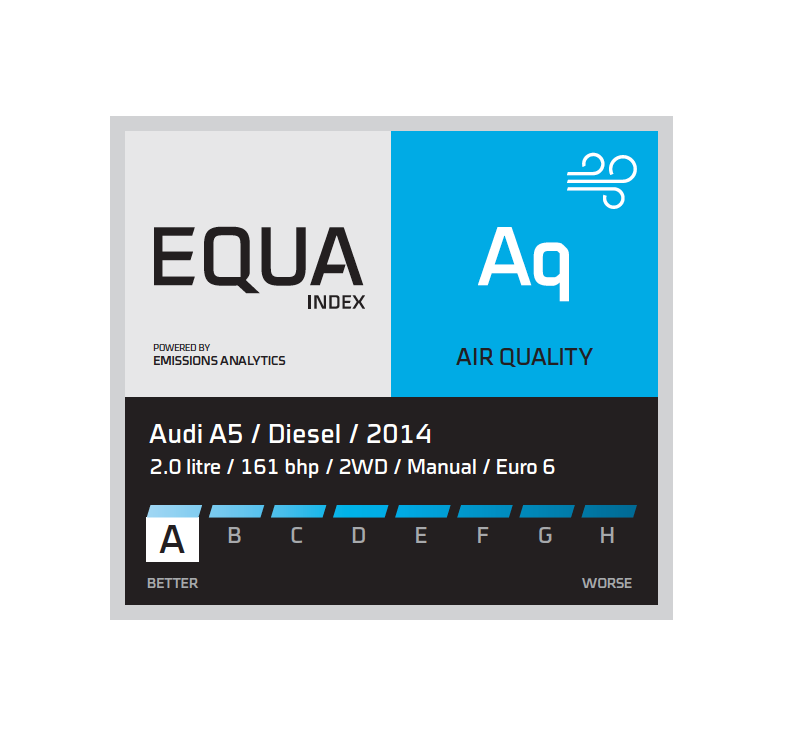
The new Equa Aq (air quality) Index provides consumers with the true picture of car emission levels, their impact on air quality and how polluting the car they may want to purchase is. Kin Branding have developed the product branding, name and identity for the Equa Aq Index.
Poor air quality is a serious issue particularly in London and urban environments. All vehicles running on diesel or petrol, emit air polluting nitrogen oxides (NO2) but the amount varies from car to car.
It is hard for the consumer conscious of wanting to make the right choice to make a comparison and understand how polluting the car they may want to buy is. The Volkswagen emissions scandal has made car pollutant emissions a hot topic but has left confusion. Are all cars, and all diesel cars dirty? The Equa Aq Index seeks to inform consumers on the environmental aspects of their purchasing decisions in a clear way.
Kin branding have undertaken this work for client Emissions Analytics who have the largest commercially available database on real world, car emissions. The work undertaken includes brand positioning, product development, naming and identity. The Equa name was chosen as it denotes equality, putting consumers on an equal footing with manufacturers , and with the real accurate data to inform their decisions.
Fiona Myles, Kin Branding, Founder says,
‘Air quality is a serious issue and consumers need to be provided with clear information. We’ve developed the branding to ensure The Equa Aq Index gives clear and easy to understand ratings to inform purchasing decisions that lead to better air quality and healthier environments.’
Nick Molton, client at Emissions Analytics says e.g.,
‘Kin Branding has supported us the whole way through the brand development process, from brand positioning to turning our data into a clear ratings product, the Equa Aq Index.’
Creative Director, Antony Johnson says,
‘It was critical that the branding communicated a definitive authority, and the culmination of true scientific analysis. The logo and typographic style complement the overall modular construction of each index table. The aim was to provide a robust and impactful presentation of the information.’

